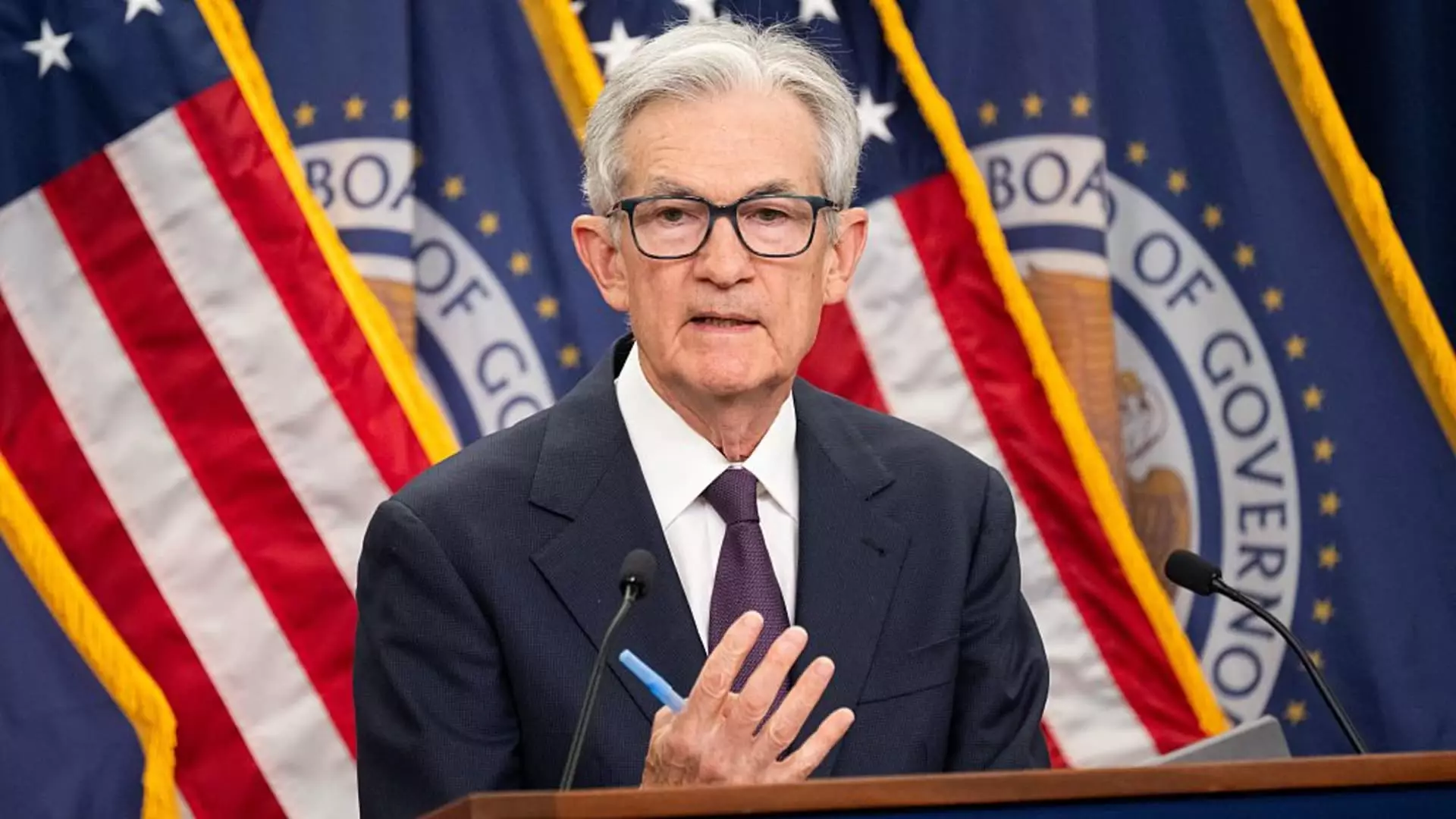The Federal Reserve’s relentless pursuit of stable inflation has hit a bump in the road. Jerome Powell, the Chair of the Fed, recently underscored the ongoing struggle to maintain the central bank’s inflation target of 2%. His remarks come at a time when the economic landscape appears fraught with uncertainties, most notably due to the lingering effects of President Trump’s tariffs. This juxtaposition brings to light an urgent question: how long can policymakers effectively stall action without risking further entrenched inflation?
Powell’s assertion that inflation lurks above the Fed’s target is more than just numbers on a graph—it reveals the stark reality that everyday Americans face. While saying the economy remains “solid” and the labor market is nearing full employment, the specter of rising prices continues to loom. At this moment, inflation rates are forecasted to rise to 2.3% in May, with core inflation, excluding food and energy, creeping up to an unsettling 2.6%. This trajectory is concerning and underscores the real economic threat to families trying to balance their budgets amid rising costs.
The Power Struggle with Tariffs
Powell’s caution isn’t merely an academic exercise—it’s a strategic response to the complexities introduced by tariffs. Historically, tariffs have caused short-lived price spikes. However, current conditions are murky. As the President doubles down on his protectionist policies, the Fed finds itself navigating turbulent waters. The implication is clear: until there is more clarity on the tariffs’ impact on prices, the Fed will not make hasty decisions regarding interest rates.
Indeed, Powell emphasizes that “policy changes continue to evolve,” echoing the confusion in economic forecasting. His reluctance to act could be interpreted as prudence, yet there’s an inherent danger in inaction. By waiting, the Fed risks allowing inflation to spiral beyond control. The political backdrop complicates this matter further, as Trump’s relentless criticism of Powell suggests a growing tension between fiscal policy and political pressures. The Fed’s independence is crucial, yet the Chair’s ability to make judicious decisions is increasingly threatened by political hostilities and impulsive rhetoric.
The Federal Open Market Committee’s Division
In stark contrast to Powell’s careful stance, the latest FOMC dot plot reveals a divided committee. Among the 19 officials, opinions regarding future rate adjustments showcase a spectrum of views—some advocate for immediate cuts, while others recommend a slower approach. This division complicates the perception of stability in the Fed’s strategy and might be perceived as indecision. A consensus, or at least a clearer direction, is imperative as markets require a steady hand.
Interestingly, even as interest rates remain unchanged for now, two influential members have indicated a favorable view towards potential cuts, contingent on favorable inflation data. This internal discord could signal an underlying struggle within the Fed regarding how to address persistent inflation without compromising the broader economic growth that has been painstakingly achieved.
Market Signals and Public Sentiment
Public sentiment mirrors the complexities of the Fed’s position. A recent survey revealed a general unease about inflation’s impact on household budgets, further emphasized by stalling wage growth. Consumers are feeling the pinch, creating a paradox where full employment isn’t translating into adequate purchasing power. The futures market pricing indicates a low probability of an imminent rate cut, which reflects market skepticism about the Fed’s maneuverability in the current climate.
The Fed is teetering on a precarious edge—balancing the dual goals of fostering full employment and keeping inflation at bay. Powell’s assertion that “without price stability, we cannot achieve the long periods of strong labor market conditions that benefit all Americans” echoes the fundamental challenge policymakers face. While the goal is noble, the execution is fraught with pitfalls that could ultimately hit the lowest-income households the hardest.
In a time when economic decisions reverberate through the fabric of society, the overall trajectory of inflation will be an essential determinant of American prosperity. The Fed’s cautious embrace of a data-driven approach may be prudent, yet the clock is ticking. As tariffs and inflation remain potent forces in the economy, the hope is that the Fed can find a productive path forward, one that doesn’t leave ordinary Americans behind amid rising economic challenges.


Leave a Reply